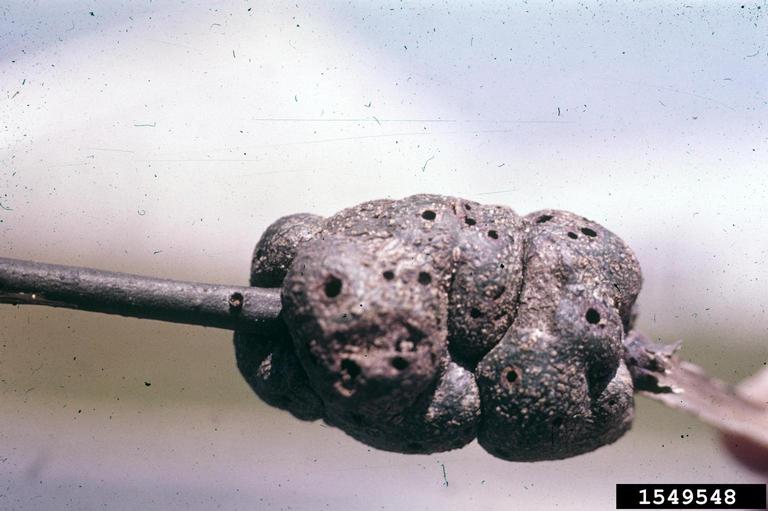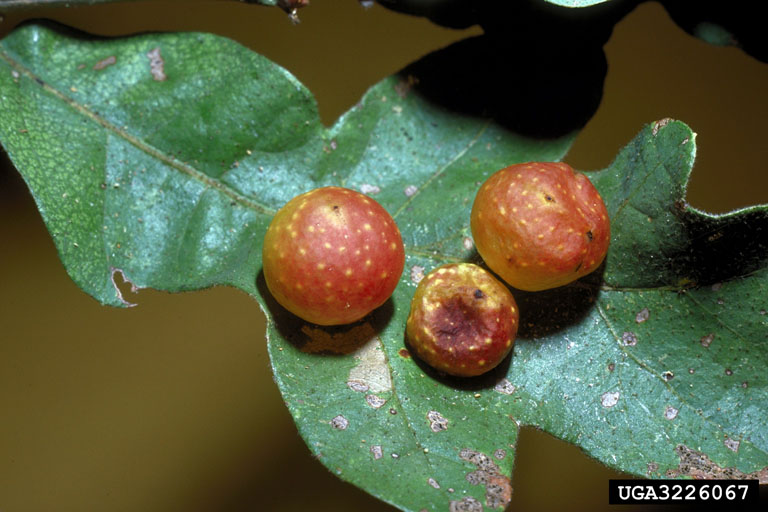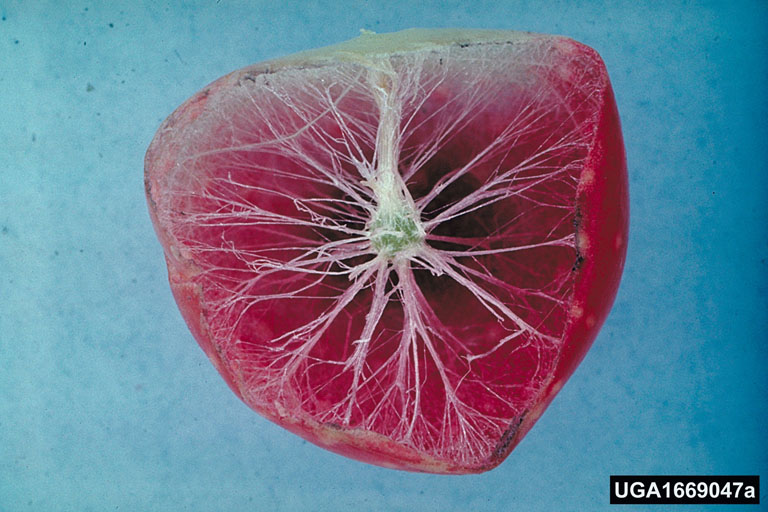 Harmless Oak Galls - May 29, 2013 Jeff Schalau, Agent, Agriculture & Natural Resources University of Arizona Cooperative Extension, Yavapai County We have five native oak species in north central Arizona: shrub live oak (Quercus turbinella); Gambel oak (Q. gambelii); Emory oak (Q. emoryi), Arizona white oak (Q. arizonica); and Dunn oak (Q. dunnii). All our oak species commonly have mistletoe growing on them, but if you take a closer look, you may also observe unusual or distorted growths on their leaves, flowers, buds, or twigs. These growths are galls produced by small insects. The gall-forming insects rarely cause more than superficial damage to the plant. However, many gardeners are alarmed by the presence of these benign visitors. There is really no need to be alarmed by gall-formers. After reading about them, you may even begin to respect them for their ingenuity. The responsible insect species are most commonly small wasps (cynipids) but may include moths, beetles, flies, or mites. The gall-forming insect lays its eggs within the plant tissue of the host plant. Fluid deposited with the egg causes plant cells to begin multiplying differently than they would otherwise. After hatching, the tiny larvae feed on the plant tissue and create a home surrounded by live plant tissue. The developing larva continues to produce plant growth compounds that maintain and control host plant cell division. The larva matures, pupates within the gall, then chews its way out of the gall when mature. To successfully form a gall the insect or mite must begin its colonization of the plant at a very precise moment in the plant's growth cycle. Otherwise, they may not be able to stimulate the plant to produce the tissue which forms the gall. Generally, initiation of leaf galls occurs around "bud break" or as new leaves begin to unfold in the spring (or early summer when “evergreen” oaks produce new leaves). The gall provides protection and food to the developing larva. Each species of gall forming insect creates a uniquely colored, shaped, and sized gall. Some species of gall formers lay multiple eggs. However, each larva develops in its own individual cavity. Most insect caused galls Arizona oaks are not harmful to the plant. Galled leaves often tolerate gall formation with little more than cosmetic damage. Infested twigs are occasionally killed. I consider this akin to natural pruning. On eastern oak species, twig galls reportedly cause significant damage to pin and willow oaks. In nearly all cases prevention of gall formation is exceedingly difficult and is not considered practical. After all, the developing insect is entirely encased in living tissue. Systemic insecticides may offer some measure of control, but the damage caused does not warrant the energy, expense, and potential environmental risk associated with an insecticide application. I recommend simply tolerating (and possibly enjoying) the various unusual shapes. You may choose to prune them off if they offend your sense of plant aesthetics. Natural enemies of gall formers are almost always present where native plant communities are affected. In addition, natural variability within populations of oaks of the same species will cause a range of "bud break" dates. This allows some oaks to fend off the gall formers better than others. For example, where there is intense early season pressure by gall formers, the individual trees that break bud later could have a distinct selective advantage. This would especially affect populations where gall formers cause damage significant enough to decrease the vigor of the infested trees or if gall formers affected acorn production. Our native hackberry trees (Celtis reticulata) also support galls on leaf stems (called petioles). These galls are caused by psyllids: small insects resembling miniature cicadas. Again, these insects cause little lasting damage to the affected tree. Galls formed by mites can cause more significant damage: especially to non-native ornamental or fruit trees such as pears. Here, pesticide applications may be appropriate in order to protect the fruit crop or vigor of the tree. If nothing else, I hope that readers will learn to observe your plants for abnormal growth. Then try to determine what caused the abnormality. Cut open the affected plant tissue. Explore the tissue with a hand lens and look for signs of insect larvae, adults, exit holes, etc. Below is some additional information and images. Follow the Backyard Gardener on Twitter – use the link on the BYG website. If you have other gardening questions, call the Master Gardener help line in the Camp Verde office at 928-554-8999 Ext. 3 or e-mail us at cottonwoodmg@yahoo.com and be sure to include your name, address and phone number. Find past Backyard Gardener columns or provide feedback at the Backyard Gardener web site: http://cals.arizona.edu/yavapai/anr/hort/byg/. Additional Information and Photos Galls on Oak, Penn State Extension Entomology http://ento.psu.edu/extension/factsheets/galls-oak Gall-Making Insects and Mites, Texas AgriLife Extension https://insects.tamu.edu/extension/publications/epubs/e-397.cfm Galls on Oaks, North Carolina Cooperative Extension http://www.ces.ncsu.edu/depts/ent/notes/O&T/trees/note05/note05.html  Gouty oak gall (from: Jim Baker, North Carolina State University, Bugwood.org).  Cynipid wasp galls (from: Ronald F. Billings, Texas Forest Service, Bugwood.org).  Cross-section of a cynipid gall on sand post oak - the green knob contains the developing larva (from: Arnold T. Drooz, USDA Forest Service, Bugwood.org). |